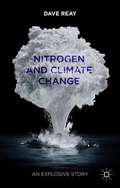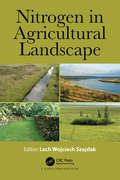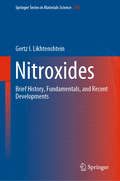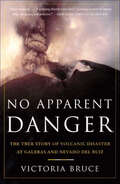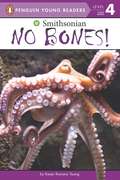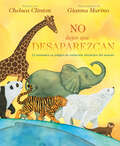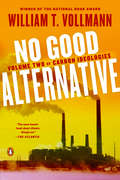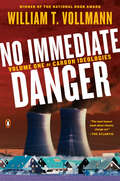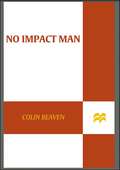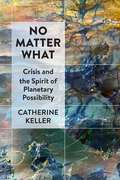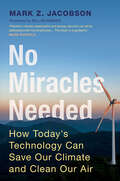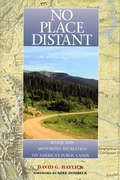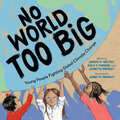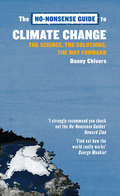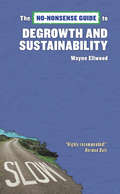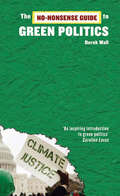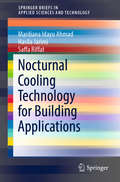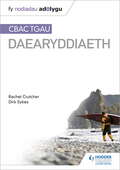- Table View
- List View
Nitrogen and Climate Change
by Dave ReayIt is the perfect storm. Limited food, water and energy unequally spread between an expanding population, and a warming climate as the bitter icing on the cake. In all these global challenges nitrogen has a leading role to play. In Nitrogen and Climate Change, Dave Reay looks at just how hard-wired into all of human civilisation nitrogen is, and whether the future will see it as our quiet savior or the toxic villain of the piece. Its story is of the peculiar and the mundane, of water turning red and people turning blue. It is one of climate friend and pollution foe, of meaty feasts and looming famine. If your main thought of nitrogen is as a boring corner of the periodic table, then it is time to look again.
Nitrogen in Agricultural Landscape
by Lech Wojciech SzajdakAgriculture transforms the environment. The simplification of agroecosystems structure increases the hazards of leaching, wind and water erosion, and volatilization of chemicals from soil. Soil nitrogen is of interest as a major crop nutrient, but also as a potential environmental pollutant. Knowledge about the behavior of soil nitrogen is desirable in order to optimize plant growth and crop yield and to minimize environmental side effects. This book also gives information about the function of biogeochemical barriers in the form of shelterbelts, which efficiently decrease the concentrations of various forms of nitrogen in ground water.
Nitroxides: Brief History, Fundamentals, and Recent Developments (Springer Series in Materials Science #292)
by Gertz I. LikhtenshteinWritten by a pioneer in the development of spin labeling in biophysics, this expert book covers the fundamentals of nitroxide spin labeling through cutting-edge applications in chemistry, physics, materials science, molecular biology, and biomedicine. Nitroxides have earned their place as one of the most popular organic paramagnets due to their suitability as inhibitors of oxidative processes, as a means to polarize magnetic nuclei, and, in molecular biology, as probes and labels to understand molecular structures and dynamics AS DRAGS FOR CANCER AND OTHER DISEASES. Beginning with an overview of the basic methodology and nitroxides’ 145-year history, this book equips students with necessary background and techniques to undertake original research and industry work in this growing field.
No Apparent Danger: The True Story of Volcanic Disaster at Galeras and Nevado Del Ruiz
by Victoria Bruce“Heart-stopping. . . . A gripping disaster story [and] a scathing account of human folly, arrogance and ambition.” –The New York Times Book ReviewOn January 14, 1993, a team of scientists descended into the crater of Galeras, an Andean volcano in Colombia, for a day of field research. As the group slowly moved toward the heart of the volcano, Galeras erupted. Nine men died instantly.Colombian geologist Marta Calvache raced into the rumbling crater, praying to find survivors. This was Calvache’s second volcanic disaster. In 1985 Calvache was part of a group of Colombia’s brightest young scientists that had been studying Nevado del Ruiz, a volcano three hundred miles north of Galeras. When Nevado del Ruiz erupted suddenly in November 1985, it killed more than twenty-three thousand people—one of the worst natural disasters of the twentieth century.In the aftermath of Nevado del Ruiz, volcanologists from all over the world came to Galeras to better understand the behavior of monumental forces at work deep within the earth. And yet, despite such expertise, fifteen people descended into a death trap at Galeras. Victoria Bruce weaves together the stories of the heroes, victims, survivors, and bystanders, evoking with great sensitivity what it means to live in the shadow of a volcano, and shows how clashing cultures and scientific arrogance resulted in tragedy. “Spellbinding.” —Publishers Weekly“A scientific thriller [that] shows how natural disasters are also the work of men.” —Boston Globe“A vivid account.” —Time Magazine“Impossible to put down.” —Sebastian Junger, #1 New York Times–bestselling author of The Perfect Storm
No Bones!
by Karen Romano Young"Octopuses, clams, sea worms, even coral- they're all marine invertebrates. Having no internal skeleton gives them an interesting shape-not to mention unusual ways of moving around, getting food, and protecting themselves. Fascinating underwater photography and lively, accessible text draw kids into the watery world of these cool ocean creatures. "
No Country for Eight-Spot Butterflies: A Lyric Essay
by Julian Aguon"Aguon&’s book is for everyone, but he challenges history by placing indigenous consciousness at the center of his project . . . the most tender polemic I&’ve ever read." —Lenika Cruz, The Atlantic"It's clear [Aguon] poured his whole heart into this slim book . . . [his] sense of hope, fierce determination, and love for his people and culture permeates every page." —Laura Sackton, BookRiotPart memoir, part manifesto, Chamorro climate activist Julian Aguon&’s No Country for Eight-Spot Butterflies is a collection of essays on resistance, resilience, and collective power in the age of climate disaster; and a call for justice—for everyone, but in particular, for Indigenous peoples.In bracing poetry and compelling prose, Aguon weaves together stories from his childhood in the villages of Guam with searing political commentary about matters ranging from nuclear weapons to global warming. Undertaking the work of bearing witness, wrestling with the most pressing questions of the modern day, and reckoning with the challenge of truth-telling in an era of rampant obfuscation, he culls from his own life experiences—from losing his father to pancreatic cancer to working for Mother Teresa to an edifying chance encounter with Sherman Alexie—to illuminate a collective path out of the darkness.A powerful, bold, new voice writing at the intersection of Indigenous rights and environmental justice, Julian Aguon is entrenched in the struggles of the people of the Pacific to liberate themselves from colonial rule, defend their sacred sites, and obtain justice for generations of harm. In No Country for Eight-Spot Butterflies, Aguon shares his wisdom and reflections on love, grief, joy, and triumph and extends an offer to join him in a hard-earned hope for a better world.
No Dejes Que Desaparezcan
by Chelsea Clinton¿Sabías que las ballenas azules son los animales más grandes de nuestro planeta?¿O que las nutrias marinas se asean las patas después de cada comida?El mundo está lleno de millones de especies animales, y cada una de ellas es única y especial. Muchas están llamadas a desaparecer. En este libro, Chelsea Clinton les presenta a los pequeños lectores algunos de los animales en peligro de extinción, explicándoles por qué son únicos y especiales y qué clase de peligros corren. No dejes que desaparezcan conduce al lector a lo largo de un día en la vida de rinocerontes, tigres, ballenas, pandas y otros animales, a la vez que nos ofrece consejos e ideas útiles de lo que todos podemos hacer para evitar que estos animales desaparezcan completamente de nuestro mundo.Ilustrado con las cálidas y llamativas ilustraciones de Gianna Marino, este libro es ideal para los amantes de los animales y para todas las personas que se preocupan por nuestro planeta.
No Dig, No Fly, No Go: How Maps Restrict and Control
by Mark S. MonmonierSome maps help us find our way; others restrict where we go and what we do. These maps control behavior, regulating activities from flying to fishing, prohibiting students from one part of town from being schooled on the other, and banishing certain individuals and industries to the periphery. This restrictive cartography has boomed in recent decades as governments seek regulate activities as diverse as hiking, building a residence, opening a store, locating a chemical plant, or painting your house anything but regulation colors. It is this aspect of mapping--its power to prohibit--that celebrated geographer Mark Monmonier tackles in No Dig, No Fly, No Go. Rooted in ancient Egypt's need to reestablish property boundaries following the annual retreat of the Nile's floodwaters, restrictive mapping has been indispensable in settling the American West, claiming slices of Antarctica, protecting fragile ocean fisheries, and keeping sex offenders away from playgrounds. But it has also been used for opprobrium: during one of the darkest moments in American history, cartographic exclusion orders helped send thousands of Japanese Americans to remote detention camps. Tracing the power of prohibitive mapping at multiple levels--from regional to international--and multiple dimensions--from property to cyberspace--Monmonier demonstrates how much boundaries influence our experience--from homeownership and voting to taxation and airline travel. A worthy successor to his critically acclaimed How to Lie with Maps, the book is replete with all of the hallmarks of a Monmonier classic, including the wry observations and witty humor. In the end, Monmonier looks far beyond the lines on the page to observe that mapped boundaries, however persuasive their appearance, are not always as permanent and impermeable as their cartographic lines might suggest. Written for anyone who votes, owns a home, or aspires to be an informed citizen, No Dig, No Fly, No Go will change the way we look at maps forever.
No Good Alternative: Volume Two of Carbon Ideologies
by William T. VollmannAn eye-opening look at the consequences of coal mining and oil and natural gas production--the second of a two volume work by award-winning author William T. Vollmann on the ideologies of energy production and the causes of climate changeThe second volume of William T. Vollmann's epic book about the factors and human actions that have led to global warming begins in the coal fields of West Virginia and Eastern Kentucky, where "America's best friend" is not merely a fuel, but a "heritage." Over the course of four years Vollmann finds hollowed out towns with coal-polluted streams and acidified drinking water; makes covert visits to mountaintop removal mines; and offers documented accounts of unpaid fines for federal health and safety violations and of miners who died because their bosses cut corners to make more money.To write about natural gas, Vollmann journeys to Greeley, Colorado, where he interviews anti-fracking activists, a city planner, and a homeowner with serious health issues from fracking. Turning to oil production, he speaks with, among others, the former CEO of Conoco and a vice president of the Bank of Oklahoma in charge of energy loans, and conducts furtive roadside interviews of guest workers performing oil-related contract labor in the United Arab Emirates.As with its predecessor, No Immediate Danger, this volume seeks to understand and listen, not to lay blame--except in a few corporate and political cases where outrage is clearly due. Vollmann is a carbon burner just like the rest of us; he describes and quantifies his own power use, then looks around him, trying to explain to the future why it was that we went against scientific consensus, continually increasing the demand for electric power and insisting that we had no good alternative.
No Immediate Danger: Volume One of Carbon Ideologies
by William T. VollmannA timely, eye-opening book about climate change and energy generation that focuses on the consequences of nuclear power production, from award-winning author William T. VollmannIn his nonfiction, William T. Vollmann has won acclaim as a singular voice tackling some of the most important issues of our age, from poverty to violence to the dark soul of American imperialism as it has played out on the U.S./Mexico border. Now, Vollmann turns to a topic that will define the generations to come--the factors and human actions that have led to global warming. Vollmann begins No Immediate Danger, the first volume of Carbon Ideologies, by examining and quantifying the many causes of climate change, from industrial manufacturing and agricultural practices to fossil fuel extraction, economic demand for electric power, and the justifiable yearning of people all over the world to live in comfort. Turning to nuclear power first, Vollmann then recounts multiple visits that he made at significant personal risk over the course of seven years to the contaminated no-go zones and sad ghost towns of Fukushima, Japan, beginning shortly after the tsunami and reactor meltdowns of 2011. Equipped first only with a dosimeter and then with a scintillation counter, he measured radiation and interviewed tsunami victims, nuclear evacuees, anti-nuclear organizers and pro-nuclear utility workers.Featuring Vollmann's signature wide learning, sardonic wit, and encyclopedic research, No Immediate Danger, whose title co-opts the reassuring mantra of official Japanese energy experts, builds up a powerful, sobering picture of the ongoing nightmare of Fukushima.Watch for No Good Alternative, the second volume of Carbon Ideologies, focusing on human experiences related to coal mining and oil and natural gas production - coming in June 2018.
No Impact Man: The Adventures of a Guilty Liberal Who Attempts to Save the Planet and the Discoveries He Makes About Himself and Our Way of Life in the Process
by Colin BeavanBill McKibben meets Bill Bryson in this seriously engaging look at one man's decision to put his money where his mouth is and go off the grid for one year—while still living in New York City—to see if it's possible to make no net impact on the environment.In No Impact Man, a guilty liberal finally snaps, swears off plastic, goes organic, becomes a bicycle nut, turns off his power, and generally becomes a tree-hugging lunatic who tries to save the polar bears and the rest of the planet from environmental catastrophe while dragging his baby daughter and Prada-wearing, Four Seasons–loving wife along for the ride. And that's just the beginning. In other words, no trash, no toxins in the water, no elevators, no subway, no products in packaging, no air-conditioning, no television . . .What would it be like to try to live a no-impact lifestyle? Is it possible? Could it catch on? Is living this way more satisfying or less satisfying? Harder or easier? Is it worthwhile or senseless? Are we all doomed or can our culture reduce the barriers to sustainable living so it becomes as easy as falling off a log? These are the questions at the heart of this whole mad endeavor, via which Colin Beavan hopes to explain to the rest of us how we can realistically live a more "eco-effective" and by turns more content life in an age of inconvenient truths.
No Matter What: Crisis and the Spirit of Planetary Possibility
by Catherine KellerA collection of essays that outline the recent work on ecology, political theology, religion, and philosophy by one of the leading theologians of our ageAs we face relentless ecological destruction spiraling around a planet of unconstrained capitalism and democratic failure, what matters most? How do we get our bearings and direct our priorities in such a terrestrial scenario? Species, race, sex, politics, and economics will increasingly come tangled in the catastrophic trajectory of climate change. With a sense of urgency and of possibility, Catherine Keller’s No Matter What reflects multiple trajectories of planetary crisis. They converge from a point of view formed of the political ecologies of a transdisciplinary theological pluralism. In its work an ancient symbolism of apocalypse deconstructs end-of-the-world narratives, Christian and secular, even as any notion of an all-controlling and good God collapses under the force of internal contradiction. In the place of a once-for-all incarnation, the materiality of unbounded intercarnation, of fragile yet animating relations of mattering earth-bodies, comes into focus.The essays of No Matter What share the preoccupation with matter characteristic of the so-called new materialism. They also root in an older ecotheological tradition, one that has long struggled against the undead legacy of an earth-betraying theology that, with the aid of its white Christian right wing, invests the denigration of matter, its spirit of “no matter,” in limitless commodification. The fragile alternative Keller outlines here embraces—no matter what—the mattering of the life of the Earth and of all its spirited bodies. These essays, struggling against Christian and secular betrayals of the spirited matter of Earth, work to materialize the still possible planetary healing.
No Miracles Needed: How Today's Technology Can Save Our Climate and Clean Our Air
by Mark Z. JacobsonThe world needs to turn away from fossil fuels and use clean, renewable sources of energy as soon as we can. Failure to do so will cause catastrophic climate damage sooner than you might think, leading to loss of biodiversity and economic and political instability. But all is not lost! We still have time to save the planet without resorting to 'miracle' technologies. We need to wave goodbye to outdated technologies, such as natural gas and carbon capture, and repurpose the technologies that we already have at our disposal. We can use existing technologies to harness, store, and transmit energy from wind, water, and solar sources to ensure reliable electricity, heat supplies, and energy security. Find out what you can do to improve the health, climate, and economic state of our planet. Together, we can solve the climate crisis, eliminate air pollution and safely secure energy supplies for everyone.
No Monkeys, No Chocolate
by Melissa Stewart Allen YoungEveryone loves chocolate, right? But how many people actually know where chocolate comes from? How it’s made? Or that monkeys do their part to help this delicious sweet exist?This delectable dessert comes from cocoa beans, which grow on cocoa trees in tropical rain forests. But those trees couldn’t survive without the help of a menagerie of rain forest critters: a pollen-sucking midge, an aphid-munching anole lizard, brain-eating coffin fly maggots—they all pitch in to help the cocoa tree survive. A secondary layer of text delves deeper into statements such as "Cocoa flowers can’t bloom without cocoa leaves . . . and maggots," explaining the interdependence of the plants and animals in the tropical rain forests. Two wise-cracking bookworms appear on every page, adding humor and further commentary, making this book accessible to readers of different ages and reading levels.Back matter includes information about cocoa farming and rain forest preservation, as well as an author’s note.
No One Is Too Small to Make a Difference: Expanded Edition
by Greta ThunbergThe groundbreaking speeches of Greta Thunberg, the young climate activist who has become the voice of a generation, including her historic address to the United Nations <P><P>In August 2018 a fifteen-year-old Swedish girl, Greta Thunberg, decided not to go to school one day in order to protest the climate crisis. Her actions sparked a global movement, inspiring millions of students to go on strike for our planet, forcing governments to listen, and earning her a Nobel Peace Prize nomination. <P><P>No One Is Too Small to Make A Difference brings you Greta in her own words, for the first time. Collecting her speeches that have made history across the globe, from the United Nations to Capitol Hill and mass street protests, her book is a rallying cry for why we must all wake up and fight to protect the living planet, no matter how powerless we feel. Our future depends upon it.
No Ordinary Man: George Mercer Dawson 1849-1901
by Lois Winslow-Spragge Bradley LocknerGeorge Mercer Dawson was indeed no ordinary man. Born in 1849, son of the first Principal of McGill University, Dawson defied health circumstances that would have defeated many people and went on to become one of our most exceptional Canadians. As a geologist in the British North American Boundary Commission between Canada and the U.S.A. and as Director of the Geological Survey of Canada in 1895, Dawson examined and explored every aspect of Canada’s unknown territories. This collection of writings, letters, diaries and essays begins with the young George and moves through his developing years to his adult life. "He climbed, walked and rode on horseback over more of Canada than any other member of the Geological Survey of Canada at that time – yet to look at him, one would not think him capable of a day’s hard physical labour …. It was his hand that first traced upon vacant maps the geological formations of the Yukon and much of British Columbia."- Lois Winslow-Spragge". To read about him is like taking a drink of water from a cool, unpolluted spring. His sense of values was so great that he once said he didn’t care much for money or possessions. All he wanted was what he could hold in his canoe."- Anne Byers, Ottawa
No Place Distant: Roads and Motorized Recreation on America's Public Lands
by Michael P. Dombeck David HavlickWhile many of the roads on public lands provide a great service with relatively little harm, others create significant problems -- from habitat fragmentation to noise pollution to increased animal mortality -- with little or no benefit.In No Place Distant, author David Havlick presents for the first time a comprehensive and in-depth examination of the more than 550,000 miles of roads that crisscross our national parks, national forests, Bureau of Land Management lands, and wildlife refuges, considering how they came to be; their ecological, financial, and societal costs; and what can be done to ensure that those roads are as environmentally benign and cost-effective as possible, while remaining functional and accessible. The book: places the profusion of roads on our public lands in historical context offers an overview of the ecological effects of roads explores the policies, politics, and economics that have fostered road-building on public lands considers the contentious topic of motorized recreation examines efforts to remove roads and restore degraded lands to healthBringing together an impressive range and depth of information along with a thoughtful analysis of the issues, No Place Distant offers a definitive look at the debate over roads on public lands. With its well-crafted prose and extensive documentation, it is an unparalleled resource for anyone concerned with the health or management of public lands in the United States.
No World Too Big: Young People Fighting Global Climate Change
by Jeanette Bradley Lindsay H. Metcalf Keila V. DawsonFans of No Voice Too Small will be inspired by young climate activists who made an impact around climate change in their communities, countries, and beyond.Climate change impacts everyone, but the future belongs to young people. No World Too Big celebrates twelve young activists and three activist groups on front lines of the climate crisis who have planted trees in Uganda, protected water in Canada, reduced school-bus climate footprint in Indonesia, invented alternate power sources in Ohio, and more. Fourteen poems by Vanessa Brantley-Newton, David Bowles, Rajani LaRocca, Renée LaTulippe, Heidi E. Y. Stemple, and others honor activists from all over the world and the United States. Additional text goes into detail about each activist's life and how readers can get involved.
No es un perro (Spanish Edition)
by Claudia Guadalupe Martinez¡Edición en español! ¡El perrito de la pradera mexicano no es un perro en lo absoluto! Es parte de la familia de los roedores y es una especie en peligro de extinción. Un divertido y entretenido libro ilustrado de no ficción para niños de 3 a 7 años que presenta el ciclo de vida del perrito de la pradera mexicano y un ingenioso concepto de formas.Spanish language edition! The Mexican prairie dog is not a dog at all! It's part of the rodent family, and is an endangered species.A fun and engaging nonfiction picture book for kids ages 3-7 that features the life cycle of the Mexican prairie dog and clever shapes concept.Un perrito de la pradera mexicano puede parecer un perro, pero ciertamente no lo es. Este mamífero adorable en realidad forma parte de la familia de los roedores.No es un perro explora el ciclo de vida del perrito de la pradera mexicano, la contribución de la especie a un ecosistema sano y las maneras en las cuales la agricultura ha destruido su hábitat y lo ha convertido en una especie en peligro de extinción.Perfecto para niños preescolares o que aún no leen, ¡esta encantadora e informativa lectura en voz alta presenta a niños curiosos un animal único que NO es un perro!A Mexican prairie dog may look like a dog, but it is certainly not a dog. This adorable mammal is actually part of the rodent family.Not a Dog explores the life cycle of the Mexican prairie dog, the species' contribution to a healthy ecosystem, and the ways in which farming has destroyed their habitat and made them an endangered species. Perfect for preschoolers and pre-readers, this charming and informative read-aloud introduces curious kids to one unique animal that is NOT a dog!
No-Nonsense Guide to Climate Change: The Science, the Solutions, the Way Forward (No-Nonsense Guides #3)
by Danny ChiversJust as the need for action on climate change becomes more urgent and overwhelming, the campaign to deny that humans are causing it has gained more traction. This completely new book meets the skeptics head on, offering a guide to the science, an insight into the politics of climate justice and a clear sense of the way forward. This is an ideal offering for students, academics and anyone interested in the growing issue of society’s impact on climate change and how to make climate justice a reality.
No-Nonsense Guide to Degrowth and Sustainability
by Wayne EllwoodThe world’s addiction to economic growth continues with barely any recognition that this is a problem. Indeed, in a Western world currently dominated by austerity measures and ducking in and out of recession, growth is seen even by progressives as the only possible solution for our economic and social woes. This No-Nonsense Guide looks deeper into the idea of economic growth–to trace its history and understand why it has become so unchallengeable and powerful. And then it goes beyond that to present the alternative–how we can kick our dirty habit, how degrowth can be turned into a positive and how we can arrive at a new levels of environmental sustainability without having to turn the clock back to the Dark Ages.
No-Nonsense Guide to Green Politics (No-Nonsense Guides #13)
by Derek WallClimate chaos and pollution, deforestation and consumerism: the crisis facing human civilization is clear enough. But the response of politicians has been cowardly and inadequate, while environmental activists have tended to favour single-issue campaigns rather than electoral politics. The No-Nonsense Guide to Green Politics measures the rising tide of eco-activism and awareness and explains why this event heralds a new political era worldwide: in the near futurethere will be no other politics but green politics.
Noch mehr Sand im Getriebe?: Kommunikations- und Interaktionsprozesse zwischen Landes- und Regionalplanung, Politik und Unternehmen der Gesteinsindustrie (RaumFragen: Stadt – Region – Landschaft)
by Olaf Kühne Corinna Jenal Karsten Berr Lara KoegstObwohl mineralische Rohstoffe wie beispielsweise Kies, Sand, Quarz und Naturstein auf vielfältige Weise Grundlagen menschlicher Existenz ermöglichen und garantieren, haben Vorhaben zur Gewinnung mineralischer Rohstoffe vielerorts mit unterschiedlichen Akzeptanzproblemen zu kämpfen. Der planerische Umgang mit Rohstoffsicherung und Rohstoffgewinnung wurde wissenschaftlich bislang hauptsächlich in Bezug auf ökologische oder fachplanerische Problemstellungen, weniger hingegen als teilsystemischer Aspekt in einem soziopolitischen Kontext betrachtet, der durch verstärkten Bürgerprotest und erneuerte Partizipations- und Demokratisierungsbestrebungen gekennzeichnet ist.
Nocturnal Cooling Technology for Building Applications (SpringerBriefs in Applied Sciences and Technology)
by Mardiana Idayu Ahmad Saffa Riffat Hasila JarimiThis book discusses nocturnal cooling technologies for building applications. Exploiting the natural environment as a renewable and sustainable resource has become a significant strategy for passive energy saving in buildings, and has led to growing interest in the use of passive radiative cooling based on nighttime (nocturnal) and daytime (diurnal) operating periods. Of these, nocturnal cooling is more promising since diurnal cooling is hard to achieve due to the solar radiation effect. As such, this book provides a comprehensive overview of nocturnal cooling for building applications, including a definition, concepts and principles; materials and devices; and cooling systems and configurations.
Nodiadau Adolygu (My Revision Notes: Cbac Tgau Daearyddiaeth (my Revision Notes: Wjec Gcs
by Dirk Sykes Rachel CrutcherExam Board: WJECLevel: GCSESubject: GeographyFirst teaching: September 2016First exams: Summer 2018Target success in WJEC GCSE Geography with this proven formula for effective, structured revision. Key content coverage is combined with exam-style tasks and practical tips to create a revision guide that students can rely on to review, strengthen and test their knowledge.With My Revision Notes every student can:- Plan and manage a successful revision programme using the topic-by-topic planner- Enjoy an active approach to revision with clear topic coverage and related 'Now Test Yourself' tasks and practical revision activities- Improve exam technique through exam tips and formal exam-style questions- Monitor their knowledge and progress using the answers provided for each 'Now Test Yourself' activity and exam-style question- Develop geographical understanding and enhance exam responses with event/place examplesPlease note: This is a Welsh-language edition.
